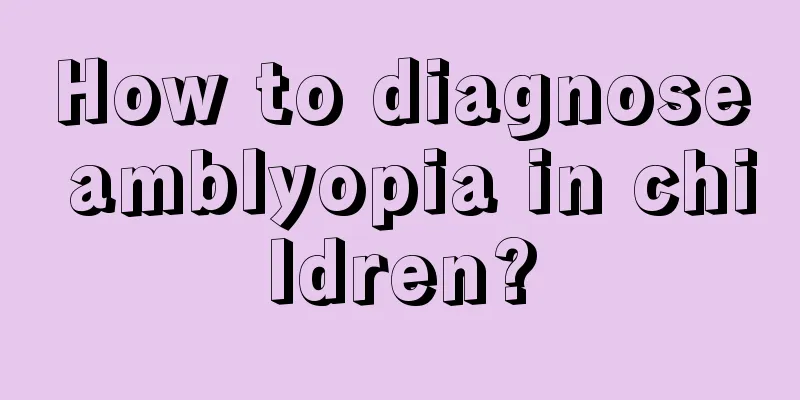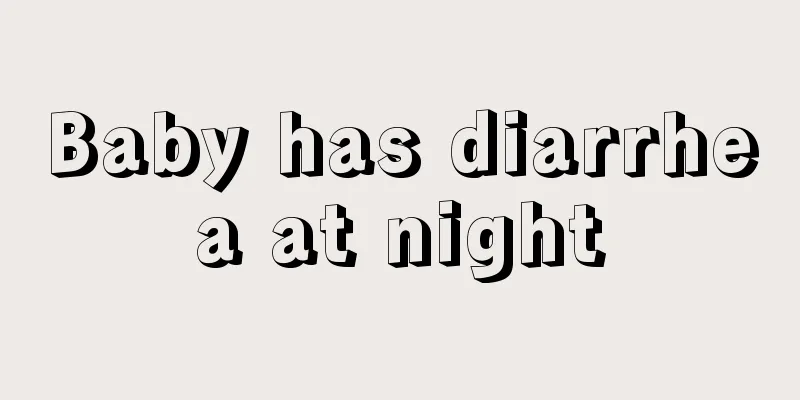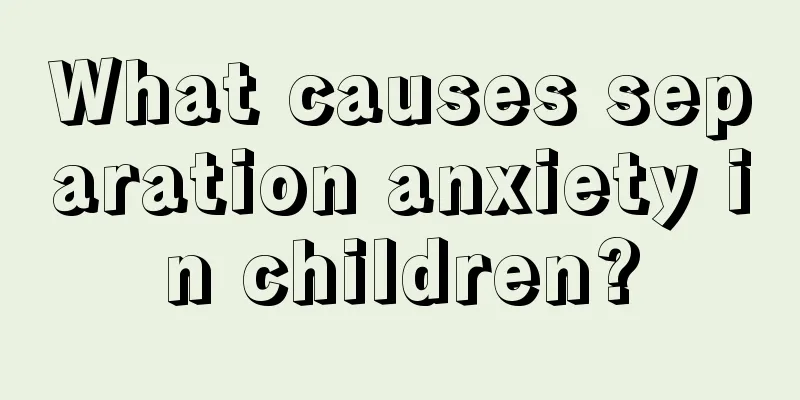How to diagnose amblyopia in children?

|
Amblyopia and myopia have become one of the problems encountered by many children, and more and more children in middle schools and even elementary schools are wearing glasses. Many parents have gradually realized that protecting their children's eyesight has become something that cannot be ignored. Myopia is generally easier to diagnose, but how do you diagnose amblyopia? How do you know that your child has amblyopia? What method is used to diagnose amblyopia in children? 1. Vision test. It is crucial to detect a child's vision as early as possible. 2. Check the refractive status. Apply 1% atropine eye ointment to the conjunctival sac 3 times a day, dilate the pupil for 3 days, and perform retinal retinoscopy after 3 weeks. After 3 weeks, determine the refractive state that needs to be corrected. The refractive power of infants and young children can be preliminarily judged and predicted by the refractive power used by the ophthalmoscope during fundus examination. 3. Check eye position. The presence of strabismus and the angle of perceived strabismus and the angle of perceived strabismus by others can be determined through corneal reflection method, cover test, prism, Maddox rod, synoptophore, etc. 4. Prism examination. 5. Slit lamp and funduscopy examination. In addition to using slit lamp and funduscopy to rule out organic eye diseases, children with amblyopia can also use a black star target ophthalmoscope to classify the nature of their gaze into four types. ① Central focus; ② Parafoveal fixation; ③ Macular fixation; ④ peripheral gaze; For monocular amblyopia with little difference in refractive state and no strabismus, attention should also be paid to the problem of macular ectopia. Fundus color photography under dilated pupils can be routinely performed to determine whether the position of the macula is normal. 6. Contrast sensitivity function (CSF). The CST curve of the amblyopic eye is depressed and the peak is shifted to the left. 7. Visual electrophysiological changes. PERG is manifested by a decrease in b-wave amplitude, and PVEP is manifested by a decrease in amplitude and a prolonged latency. In clinical practice, multi-channel VEP and multifocal VEP are also used to study the visual electrophysiological changes of different types of amblyopia. The above are some examination and diagnosis methods for whether children have amblyopia. With so many advanced methods, careful examinations can be carried out, making it easy to determine whether a child has amblyopia. The earlier this examination is done, the better. If the child has symptoms of amblyopia, adjustments and treatment can be made as early as possible. Earlier treatment will have better results. |
<<: Why does my child always itch?
>>: What should you pay attention to when your child changes teeth at the age of seven?
Recommend
The dangers of holding your baby to urinate
In order to prevent the baby from wetting the bed...
How to treat and prevent synovitis in children
Many people do not understand synovitis. In fact,...
What to do if a newborn baby has red spots on his face
When the baby is just born, because the baby is r...
Can babies who are allergic to cow's milk replace their infant formula with soy milk powder?
Milk is an essential food for the growth and deve...
What should I do if adenovirus infection is difficult to cure in children?
Adenovirus is a relatively acute infectious disea...
How long does it take to get rid of fever after taking the antipyretic injection?
It is actually very common for babies to have a f...
Why do children have thinning hair?
The baby's development is an issue of great c...
Hand, foot and mouth disease crying at night
After the onset of hand, foot and mouth disease, ...
What is the importance of parent-child communication?
Nowadays, more and more people pay attention to c...
Is it normal for children to poop three times a day?
In general, the number of times people defecate i...
Is it okay for a picky eater to only drink milk powder?
Milk powder is an indispensable food for children...
Children's allergic rhinitis folk remedies
Allergic rhinitis in children is a common and fre...
What should I do if my baby has green loose stools with foam?
A baby is the hope of the family, the apple of th...
Why does a child's tongue coating turn white?
I believe that every child is the hope of a famil...
Why do children’s teeth turn black?
Oral hygiene is a big problem for children. Child...









